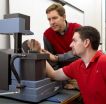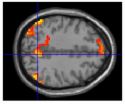(Press-News.org) Ibn al-Haytham's 11th-century Book of Optics, which was published exactly 1000 years ago, is often cited alongside Newton's Principia as one of the most influential books in physics. Yet very little is known about the writer, considered by many to be the father of modern optics.
January's Physics World features a fanciful re-imagining of the 10-year period in the life of the medieval Muslim polymath, written by Los Angeles-based science writer Jennifer Ouellette.
The feature covers the time when al-Haytham -- banished from society and deprived of books -- came up with his revolutionary theories about the form and passage of light.
Ouellette brings detail to the skeletal plot of al-Haytham's life, from the awe and intimidation felt when he was summoned by the Caliph to use his engineering prowess to overcome the annual flooding of the Nile, to his fear of punishment when he realised he had failed in his task.
Al-Haytham was only able to escape a death sentence from the notoriously brutal Caliph by pretending he had gone mad. The Caliph instead incarcerated Al-Haytham, imprisoning him under house arrest to a cell. Confined and alone, it was here that Al-Haytham carried out the work that was to make him famous.
In 11th-century Egypt, Aristotle's ancient thought that visible objects and our own eyes emit rays of light to enable our vision still held.
Ouellette imagines al-Haytham lying alone in his darkened room questioning why the objects in the room are not emitting light and asking 'Is it possible that the ancients were mistaken?'
The question providing the crux, al-Haytham was spurred into experimental action with the candles and copper in his bare room to conclude that there is no mysterious "form" that all objects emit; rather there are sources of primary light that are reflected by other objects.
As Ouellette writes, "This is a work of fiction – a fanciful re-imagining of a 10-year period in the life of Ibn al-Haytham, considered by many historians to be the father of modern optics. Living at the height of the golden age of Arabic science, al-Haytham developed an early version of the scientific method 200 years before scholars in Western Europe."
Released from prison after the Caliph's death, Al-Haytham (AD 965-1040) went on to make contributions to astronomy, mathematics, engineering and medicine, as well as physics. But it his seven-volume Book of Optics, which he wrote while imprisoned, that remain his most famous contributions to science, covering visual perception, psychology and physical optics.
###
Also in the January edition:
Condensed-matter analogues of black holes and other cosmic phenomena may allow physicists to test ideas about quantum gravity and the early universe, as Ralf Schützhold, theoretical physicist at the University of Duisburg-Essen, and Bill Unruh, theoretical physicist at the University of British Columbia, explain.
Classical physics is usually enough to be able to understand the behaviour of biological molecules. But as Seth Lloyd, from the Department of Quantum Mechanical Engineering at the Massachusetts Institute of Technology, describes, some photosynthetic bacteria exploit weird quantum-mechanical effects to convert harvested light into chemical energy.
END
COLUMBUS, Ohio – Young people may crave boosts to their self-esteem a little too much, new research suggests.
Researchers found that college students valued boosts to their self-esteem more than any other pleasant activity they were asked about, including sex, favorite foods, drinking alcohol, seeing a best friend or receiving a paycheck.
"It is somewhat surprising how this desire to feel worthy and valuable trumps almost any other pleasant activity you can imagine," said Brad Bushman, lead author of the research and professor of communication and psychology at The ...
AMES, Iowa – Michael Kessler has worked with polymers that repair themselves when they crack. And he's worked with polymers made from vegetable oils. Now he's working to combine the two technologies.
Kessler, an Iowa State University associate professor of materials science and engineering and an associate of the U.S. Department of Energy's Ames Laboratory, is researching and developing biorenewable polymers capable of healing themselves as they degrade and crack.
"If successful, the results of this research will provide biorenewable alternatives to petroleum-based ...
VIDEO:
Extracting mitochondria from a human cell (larger object on bottom right) is a tricky process. NIST researchers recently developed techniques that can surgically remove these tiny cellular engines, potentially enabling...
Click here for more information.
Medical researchers who crave a means of exploring the genetic culprits behind a host of neuromuscular disorders may have just had their wish granted by a team working at the National Institute of Standards and Technology ...
Brain scans of children with attention-deficit/hyperactivity disorder (ADHD) have shown for the first time why people affected by the condition sometimes have difficulty in concentrating. The study, by experts at The University of Nottingham, may explain why parents often say that their child can maintain concentration when they are doing something that interests them, but struggles with boring tasks.
Using a 'Whac-a-Mole' style game, researchers from the Motivation, Inhibition and Development in ADHD Study (MIDAS) group found evidence that children with ADHD require ...
Is the expansion of the universe accelerating for some unknown reason? This is one of the mysteries plaguing astrophysics, and somewhere in distant galaxies are yet-unseen supernovae that may hold the key. Now, thanks to a telescope calibrated by scientists from the National Institute of Standards and Technology (NIST), Harvard University and the University of Hawaii, astrophysicists can be more certain of one day obtaining an accurate answer.
The NIST scientists traveled to the summit of Haleakala volcano in Hawaii to fine-tune the operation of billions of light-collecting ...
As the day draws nearer for the world to run out of the unique addresses that allow us to use the Internet—now predicted to happen by the end of 2012—researchers at the National Institute of Standards and Technology (NIST) have issued a guide for managers, network engineers, transition teams and others to help them deploy the next generation Internet Protocol (IPv6) securely.
Guidelines for the Secure Deployment of IPv6 (NIST Special Publication 800-119), describes the features of IPv6 and the possible related security impacts, provides a comprehensive survey of mechanisms ...
Two new draft publications from the National Institute of Standards and Technology (NIST) provide the groundwork for a three-tiered risk-management approach that encompasses computer security risk planning from the highest levels of management to the level of individual systems. The draft documents have been released for public comment.
Both publications are a part of NIST's risk management guidelines, which have been developed in support of the Federal Information Security Management Act (FISMA), and adopted government wide to improve the security of government systems ...
In a groundbreaking achievement that could help scientists "build" new biological systems, Princeton University scientists have constructed for the first time artificial proteins that enable the growth of living cells.
The team of researchers created genetic sequences never before seen in nature, and the scientists showed that they can produce substances that sustain life in cells almost as readily as proteins produced by nature's own toolkit.
"What we have here are molecular machines that function quite well within a living organism even though they were designed ...
(PHILADELPHIA) Elevated fat and cholesterol levels found in a typical American-style diet play an important role in the growth and spread of breast cancer, say researchers at the Kimmel Cancer Center at Jefferson.
The study, published in the January issue of The American Journal of Pathology, examines the role of fat and cholesterol in breast cancer development using a mouse model. The results show that mice fed a Western diet and predisposed to develop mammary tumors, can develop larger tumors that are faster growing and metastasize more easily, compared to animals eating ...
Madison, WI December 28, 2010 – The Australian Government National Water Commission funded a study to establish an approach to assess the quality of water treated using managed aquifer recharge. Researchers at Australia's CSIRO Land and Water set out to determine if the en product would meet standard drinking water guidelines.
At the Parafield Aquifer Storage, Transfer and Recovery research project in South Australia, the team of scientists harvested storm water from an urban environment, treated it in a constructed wetland, stored it in an aquifer, and then recovered ...


